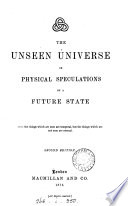 Every particle of matter in the universe attracts every other particle with a force which is directly proportional to the product of their masses and inversely proportional to the square of the distance between them. Every particle of matter in the universe attracts every other particle with a force which is directly proportional to the product of their masses and inversely proportional to the square of the distance between them.  Elementary Lessons in Astronomy - Page 308by Sir Norman Lockyer - 1889 - 363 pagesFull view Elementary Lessons in Astronomy - Page 308by Sir Norman Lockyer - 1889 - 363 pagesFull view - About this book
 | Isaac Todhunter - Statics - 1853 - 362 pages
...detailed in works on Physical Astronomy, that two particles of matter attract each other with a force directly proportional to the product of their masses, and inversely proportional to the square of their distance. Suppose then a particle to be attracted by all the particles of a body; if we resolve... | |
 | Isaac Todhunter - Statics - 1866 - 384 pages
...that two particles of matter placed at any sensible distance apart attract each other with a force directly proportional to the product of their masses, and inversely proportional to the square of their distance. Suppose then a particle to be attracted by all the particles of a body ; if we resolve... | |
 | Isaac Todhunter - Mathematics - 1866 - 386 pages
...that two particles of matter placed at any sensible distance apart attract each other with a force directly proportional to the product of their masses, and inversely proportional to the square of their distance. Suppose then a particle to be attracted by all the particles of a body ; if we resolve... | |
 | Adolphe Ganot - 1868 - 886 pages
...according to the law of Newton, which may be thus expressed: the attraction between two material particles is directly proportional to the product of their masses, and inversely proportional to the square of their distance* asunder. To illustrate this, we may take the case of two spheres which, owing to... | |
 | Sir Norman Lockyer - Astronomy - 1883 - 330 pages
...force with which two material particles respectively attract each other is directly proportional to their masses, and inversely proportional to the square...mass, produced in one second in a body subjected to its action, — and this measure of force must be remembered in discussing the above law of gravity.... | |
 | Sir Norman Lockyer - Astronomy - 1874 - 332 pages
...force with which two material particles respectively attract each otlier is directly proportional to their masses, and inversely proportional to the square...mass, produced in one second in a body subjected to its action, — and this measure of force must be remembered in discussing the above law of gravity.... | |
 | Balfour Stewart - 1875 - 270 pages
...who came to the conclusion that every particle of matter attracts every other particle with a force proportional to the product of their masses, and inversely proportional to the square of their distances. But this only drives the mystery of gravitation from the mass to the particle,... | |
 | Balfour Stewart, Peter Guthrie Tait - Cosmology - 1875 - 274 pages
...who came to the conclusion that every particle of matter attracts every other particle with a force proportional to the product of their masses, and inversely proportional to the square of their distances. But this only drives the mystery of gravitation from the mass to the particle,... | |
 | Balfour Stewart - 1875 - 244 pages
...who came to the conclusion that every particle of matter attracts every other particle with a force proportional to the product of their masses, and inversely proportional to the square of their distances. But this only drives the mystery of gravitation from the mass to the particle,... | |
 | George Minchin Minchin - 1877 - 470 pages
...particle with a force whose direction is that of the line joining the two particles, and whose magnitude is directly proportional to the product of their masses and inversely proportional to the square of the distance between them. This law of universal attraction is a generalization from experience,... | |
| |